Going To The Dogs
Although the quote is often attributed to Thomas Jefferson, it was actually Thoreau who said, “That government is best which governs least.” A sterling example of that wisdom was on full display when Congress passed the Food Safety Modernization Act and made changes to the Veterinary Feed Directive which require rural veterinarians to take a more active role in the beef production process. As a result, beginning in June, cattlemen won’t be able to buy over-the-counter antibiotics like penicillin and tetracycline without a prescription from a veterinarian. And in order to get that prescription you must now be able to prove that you have what the legislators called “a healthy veterinary-client-patient relationship.”
But what happens if there is no veterinarian to have a close personal relationship with?
Yoohoo, Is Anyone There?
As usual, the legislators got the cart before the horse. Maybe they should have done something about the shortage of vets in cattle country before playing like eHarmony by forcing you to hook up with a veterinarian for a “relationship.” And it’s going to be fascinating to watch an internet vet tell a rancher how to perform a caesarean or preg check a cow on a Zoom call.
Dr. Randy Wheeler, executive director of the Iowa Veterinary Medical Association says that, “According to 2019 statistics, 44 states are seeing veterinarian shortages and the deficit is only worsening. Many of the shortages are in rural areas, and this issue may be increasing.”
Dr. Clinton Neill, PhD wrote the definitive work on the subject in his paper, Addressing the
Persistent Shortage of Food Animal Vets and its Impact on Rural Communities. He wrote,
“The USDA has identified over 200 shortage areas (unfilled veterinarian positions) in 2021 that cover over 500 counties, many of which are rural. Food animal veterinarian positions in
Much of the decline in large animal vets stems from three key changes. Says Dr. Neill, “A significant increase in education debt obtained by veterinary students, which has outpaced their potential earnings. A flat, if not slightly declining, trend in the number of veterinary students
ducers often operate.”
Many of the larger ranches now hire their own vet which skews the figures making the shortage of large animal vets available to work on smaller clients’ livestock even worse than the numbers indicate.
Follow The Money
We hate to bore you with numbers but to understand the problem fully it’s necessary. So let’s get this over with as fast and as efficient as we can. Here are 25 reasons gleaned from several sources that explain why large animal vets in cattle country are as rare as a cowboy with a 401K.
by LEE PITTS
The Vegan Solution
Apopular idea floating around the vegan community is that we could solve the whole climate change dilemma (hoax) overnight if all the world’s vegan billionaires would donate a billion dollars each to buy up all the cows on earth and destroy them. I am far from being a mathematician but I did a bit of number crunching on the back of a napkin to see if the vegan’s idea would work.
two-thirds of these shortage areas have remained vacant in the past 5 years.”
Dr. Neill says that this vet shortage is nothing new but, “It has now reached such a critically low point that urgent action is required. Only 3-4 percent of new veterinary graduates have entered food animal-related practice over the past 20 years. This does not bode well for the future, as food animal veterinarians currently make up about 5 percent of all veterinarians in the U.S.”
who pursue food animal veterinary practice after graduation. And a rapidly growing companion animal sector that is outpacing the earning potential of other fields of veterinary medicine.”
“Further,” says Dr. Neill, “the increase in consolidation among concentrated animal feeding operations has led to larger herd sizes, but fewer operations, which may contribute to a lack of sufficient demand in some rural areas where smaller-scale and lower-income livestock pro-
Legislation to Suspend Brazilian Beef Imports to the U.S.
SOURCE: NORTHERNAG.NET
Brazil, the world’s largest exporter of beef halted exports to China, their top customer, after a case of BSE was discovered in late February. The investigation of the case was announced earlier this week with Brazil’s agriculture ministry confirming the case shortly thereafter.
Brazil’s beef shipments to China were halted as part of the trade protocol between the two countries. The suspension is expected to be temporary although it’s unknown how long it will be. China accounted for 60 percent of Brazil’s beef exports in January so the suspension will start to be felt across the global beef market quickly.
Samples of the infected animal were sent to the World Organization for Animal Health (OIE) lab in Alberta, Canada, to confirm whether it was the classic form of the disease or its “atypical” version. An atypical case also generally means the animal contracted the disease spontaneously, not through contaminated meat-and-bone meal. Preliminary testing in Brazil indicated that the case was the atypical form of the disease.

continued on page 4
1. According to Dr. Rosslyn Biggs, the director of continuing education for the College of Veterinary Medicine at Oklahoma State University, “Veterinarians spend four years in vet school after completing a four-year undergraduate degree. On average, they leave school with nearly $190,000 in debt. When you’ve got six figures of debt and then you’re looking at trying to buy a practice or buy into a practice, and then the
continued on page 2
Despite What You Might Have Heard, Wildlife Populations Are Thriving
BY ROB GORDON / DAILY SIGNAL
With the incessant warnings of vanishing wildlife, it just might surprise you to learn that many animals in the U.S. are doing quite well.
The population and range of most dramatically shrank by the beginning of the 20th century. We had converted forests to fields and fueled our economy and built our homes, buildings, fences, train trestles, and transportation (wagons, boats, ships, boxcars, and even early cars) from wood.
It was a time before basic laws prohibiting things like dumping raw sewage and cruder agricultural practices generated the Dust Bowl. Some of these animals were an important food source, while there was little if any management of hunting, trapping, and fishing.
Perhaps most importantly, many were considered serious threats to crops, livestock, desired wildlife, and people, and were purposefully eradicated.
However, the past century has seen a dramatic turnaround on human pressure on American wildlife. Huge improvements in ag-
continued on page 4
According to the Food and Agriculture Organization there are one and a half BILLION head of cattle on earth and let’s say each one of them was worth $1,000. According to my calculations it would cost one and a half TRILLION dollars to buy all the world’s cattle.
There are an estimated 2,668 billionaires on earth but we don’t know how many of them are vegans. So far I could only find two who will admit to it. So the two vegans would have to come up with 750 BILLION dollars EACH to make cattle extinct. Not even Elon Musk, Jeff Bezos or Bill Gates has that kind of cash laying around.
The problem with the vegan “solution” is that it assumes every cattle owner would be willing to sell their bovines. Take India, for example. It’s the country with the most cattle with an estimated 305 million head. The problem for the vegan mathematicians is that cattle are revered and protected in India and the thought of killing them all would be inconceivable to them.
The United States owns the third most cattle and its billionaires are quite fond of their cattle too. Take John Malone, for example, who just so happens to be the largest landowner in the country. He owns Silver Spur Ranches, a top-notch ranching and beef company that runs on 2.2 million acres and includes the Silver Spur Ranch in Encampment, Wyoming, and the Bell Ranch and the TO Ranch, both in New Mexico.
He also has ranches in Walden and Kiowa, Colorado. It turns out that Malone is just as good at running ranches as he was his media business that made him worth nearly ten billion dollars. I’d like to see the two vegan billionaires I was able continued on page 3

NEWSPAPER PRIORITY HANDLING
Riding Herd
March 15, 2023 • www.aaalivestock.com Volume 65 • No. 3
LEE PITTS
Never joke with mules or cooks as they have no sense of humor.
Saying things that need to be said.
litYes. Please subscribe me to the Livestock Market Digest for:
equipment and technology related to that, those numbers become hard to finance.”
2. For vet students their debt ranges from $84,262 to $370,500 across all schools in the U.S. Only 17 percent of students of graduating from vet schools don’t have any debt with 41 percent of vet students having debt in excess of $200,000.
3. Veterinarians working with cattle have a particularly hard time paying off their debt. Fifty percent of bovine vets still have unpaid education debt 29 years after graduation!
4. 4. According to the American Veterinary Medical Association (AVMA), “In 2021, the mean starting salary for a veterinarian working exclusively or predominantly in the treatment of food animals was about $85,000, compared to more than $100,000 for those who specialize in pet care.”
5. Between 2010 and 2020 the number of rural veterinary businesses declined by 1.1 percent across the entire country. Yet, according to the Bureau of Labor Statistics, demand for all veterinary labor is expected to expand by 19 percent by the end of the current decade.
6. Among the top ten highest salaried kinds of vets, the large animal vet comes in at number seven.
7. It’s estimated that the cost of a vet degree from UC Davis is $265,000!
8. People in the know say that vet school is harder than medical school.
9. Seventy percent of the practicing vets in the country treat companion animals like dogs and cats. Small pet owners are demanding more frequent and higher levels of care for their dogs, cats, canaries and such, and with the extended life of pets, more higher paid small animal vets are also drastically needed.
10. During the COVID pandemic, when people tended to hunker down at home, they got lonely and acquired more pets to keep them company. This contributed to an exodus of large animal vets as they opted for better pay and less danger. The COVID pandemic caused increased patient load, staff shortages, and time-consuming safety protocols. With increased demand came higher costs. For example, I called around to a couple small animal vets in my area and found that it could cost from $300 to $470 to get a dog spayed. Obviously, you can pay off college debt a lot faster spaying dogs than you can cattle. And you aren’t going to get kicked in the groin in the process.
11. According to Mars Veterinary Health, “With pet ownership steadily on the rise, a 33 percent increase in pet healthcare service spending is expected over the next 10 years. Nearly 41,000 additional veterinarians will be needed to meet the needs of companion animal healthcare by 2030. Even with the new veterinary graduates expected over the next 10 years, a shortage of nearly 15,000 veterinarians will likely still exist by 2030.
12. It would take more than 30 years of graduates to meet the 10-year industry need for credentialed veterinary technicians.
13. 13. According to the AVMA, only 20 percent of veterinary students who graduated between 2010 and 2019 were male.
14. Fifty five percent of large animal veterinarians are now women and 44.8% of large animal vets are men. In general, females tend to prefer treating small animals versus large animals, the one exception being working with equines.
Livestock Market Digest (1SSN 0024-5208) (USPS NO. 712320) is published monthly except semi-monthly in September in Albuquerque, N.M. 87104 by Livestock Market Digest, Inc.
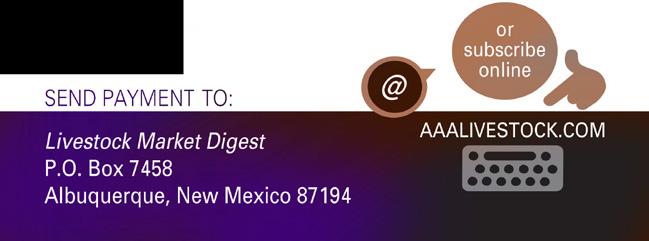
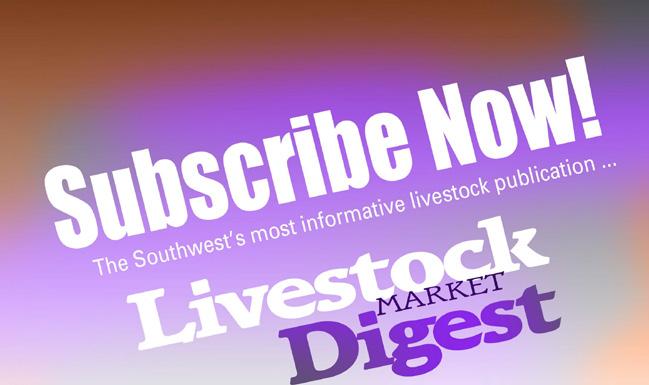
Periodicals Postage Paid at Albuquerque, N.M.
POSTMASTER-Send change of address to: Livestock Market Digest, P.O. Box 7458, Albuquerque, N.M. 87194
Subscribe Today
For advertising, subscription and editorial inquiries write or call: Livestock Market Digest P.O. Box 7458 Albuquerque, N.M. 87194
Telephone: 505-243-9515
Fax: 505-349-3060 www.aaalivestock.com
EDITORIAL and ADVERTISING STAFF
CAREN COWAN Publisher
LEE PITTS Executive Editor
CHUCK STOCKS Publisher Emeritus
RANDY SUMMERS Sales
FALL MARKETING EDITION AD SALES
RANDY SUMMERS, 505-850-8544 email: rjsauctioneer@aol.com
FIELD EDITOR

DELVIN HELDERMON, 580/622-5754
1094 Koller Rd, Sulpher, OK
ADMINISTRATIVE and PRODUCTION STAFF
JESSICA DECKER Special Assistance
KRISTY HINDS Graphic Designer

15. The aging of large animal vets will also add to the vet shortage.
16. The average sales volume for rural veterinary practices was about $461,500 in 2020, compared with $734,000 for an urban vet practice.
17. According to the AVMA, the percentage of all new graduates entering large animal practice has been about 3-4 percent every year over the past 20 years. Dr. Neill adds, “This is a stark difference compared to 40 years ago, when the largest proportion of veterinarians (about 40 percent) were focused on food animal veterinary medicine.
18. According to Banfield Pet Hospital, “The potential shortage of vets would leave 75 million pets without veterinary care by 2030. Mars Veterinary Health reports a 6.5 percent increase in vet appointments for 2021.
19. The severity of the problem will only get worse as the 33 accredited vet schools in the United States can’t even find enough large animal vets necessary to teach and train the next generation of vets.
20. AVMA President Dr. Lori Teller says that among vet school graduates, nearly half are choosing to work exclusively with companion animals, with another 8 percent selecting mixed practices, where they might treat a dog and cat one day and a cow the next. Fewer than 3 percent of recent graduates choose to work exclusively with food animals, with others deciding to pursue advanced degrees or go into specialties, such as horse care.
21. Food animal veterinarians are overwhelmingly white, male and over the age of 50. However, veterinarians entering the industry now are overwhelmingly female and are coming from urban and suburban areas. Studies show that most students want to return to the area in which they grew up. About 20 percent of the AVMA members who graduated from 20102019 were men while the number of women owning veterinary
Page 2 Livestock Market Digest March 15, 2023
ADDRESS CITY STATE ZIP — MY CHECK IS ENCLOSED FOR — One Year: $25 Two Years: $35 Single copy: $10 Clip & mail to:
P.O. Box
NAME
Livestock Market Digest,
7458, Albuquerque, N.M. 87194
□ 1 Year at $25 □ 2 Years at $35 NAME ADDRESS CITY STATE ZIP PHONE E-MAIL 0 MC O VISA CARD NUMBER EXPIRATION DATE CC# CCV# SIGNATURE □ Payment Enclosed GOING TO THE DOGS from page 1
practices jumped up 12 percent in the last decade.
22. A 2020 study found more than half of all veterinarians reported work-related injuries over a two-year period, with those working with large farm animals twice as likely to get hurt. “Getting hurt is a daily concern for men and women,” says Dr. Christine Navarre, a professor at Louisiana State University’s School of Animal Sciences.
23. “I think that a lot of our incoming students maybe have a romanticized view of veterinary medicine,” says Navarre. “They get out there and they’re faced with this huge amount of debt in a rural area that’s isolated. Vet school graduates are mostly female, so you throw a few kids in there and you throw some struggles with daycare, and they just give up at about five years.”
24. A recent survey found that 87 percent of vets in the U.S. had moderate to high burnout rates and it’s not just the grueling and sometimes dangerous work that leads to burnout. High debt, high on-call demand, lack of mentorship availability, and difficulty acquiring necessary resources to establish a practice all contribute to high stress levels. Then add in the pressure that comes from getting to appointments on time and it gets to a person after a while. Especially newer vets who are feeling as though they cannot financially afford to start their own business, and the temptation of higher paying alternatives in a more urban environment. Many people who have dreamt for most of their lives of becoming a large animal vet often leave after five years due to the 60 to 80 hours work weeks with nights
and weekends on call, and not having access to more entertainment and social activities that they’d have in the city. Not to mention employment opportunities for their partner.
25. The number of vets working in companion animal practices increased from 65 percent to nearly 70 percent from 2015 to 2020.
We think you get the picture.
Healthy Relationship, Unhealthy Vet
There are other troublesome implications that have arisen due to the shortage of large animal vets, other than the fact that there may not be anyone available to form the “healthy veterinary-client-patient relationship” demanded by your government. Of course the worst result according to Senator Cindy HydeSmith (R-Miss.) is that, “We are losing animals because we just have no one to come to the farm in time to save them.”
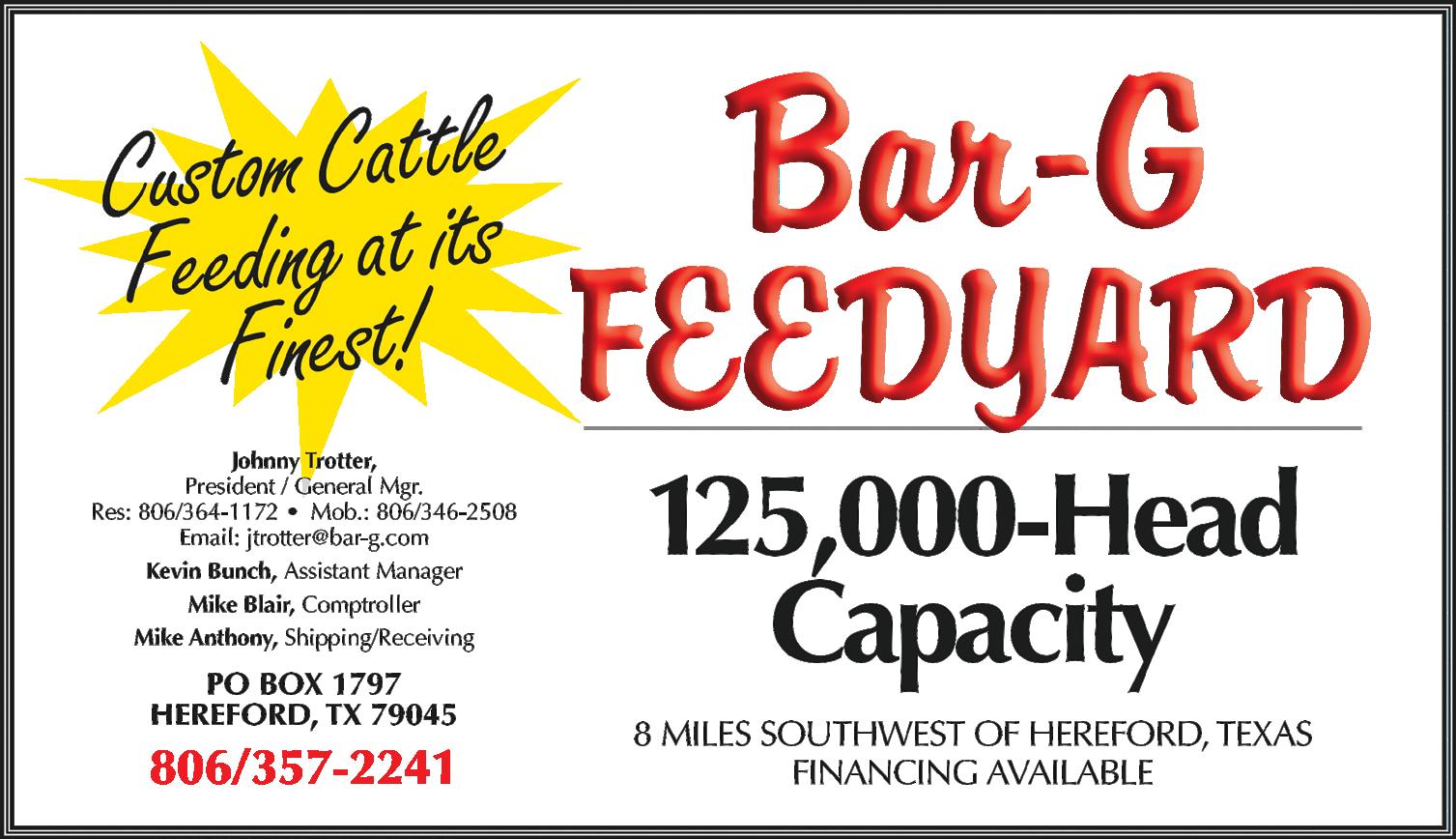
It’s one thing to lose livestock but this shortage could also impact human lives. The AVMA warns “that without enough vets on the front line, the food supply chain is vulnerable to diseases such as foot and mouth and swine flu.”
According to Dr. Neill, “The decline in food animal veterinarians in rural areas heightens concerns for a number of risks, including food safety threats, animal disease outbreaks, the potential passing of animal diseases to human populations, and decreasing rural economic growth. In essence, veterinarians protect the whole of the human and animal population, so it is critical that we have a strong pipeline of practitioners to work in rural areas.”
Accidentally Organic
The fact of the matter is there isn’t going to be a vet practice in every community like we’ve previously enjoyed. According to Dr. Neill, “There could be larger practices with multiple veterinarians covering a greater
region.” He sees haul-in practices growing in number, allowing farmers to bring an animal to the vet rather than a doctor traveling from ranch to ranch.
“Telemedicine solutions also are gaining traction,” he says.
“A veterinarian can examine a sick calf from off-site, checking heart rate, respiration or evaluating the animal for other clinical signs using a smartphone. Farmers are going to have to be able to adapt to the new way that health care is delivered.”
Some say that we could have more vet techs fill in between the empty spaces. Veterinary technologists can do medical tests that help diagnose an animal’s injuries and illnesses and perform some of the procedures. But veterinary technologists need a 4-year bachelor’s degree, and technicians need a 2-year associates degree and both technologists and technicians must take a credentialing exam and become registered, licensed, or certified. Most large animal jobs are physically and emotionally demanding and many vet techs are on call evenings, weekends, and holidays. All that for an average wage of $36,850! That’s why we’re seeing more and more vet techs leave for human medicine.
If something doesn’t change soon we’re likely to see a lot more natural and organic meat in the meat case of the future. Not because the rancher didn’t desperately want the services of a vet but because when he or she calls the vet clinic there’s no one there to answer the phone. ▫
to identify try to out-swap a tough trader like John Malone out of his cows.

Another big landowner is Stan Kroenke with 1,380,000 acres and counting. In 2016, he bought the most expensive ranch ever, the W.T. Waggoner Estate. The 510,000 acre ranch he purchased is believed to be the largest ranch behind a single fence in the country.
Stan earned his wealth mostly from sports and is the owner of the Los Angeles Rams. As far as I know you can still buy a hot dog in his SoFi Stadium so I doubt Stan is a vegan and that he’s going to be a willing seller.
The vegans can cross Peter Buck off their list too. The nuclear scientist/Subway founder died in 2021 at the age of 90 but not before he became one of the largest landowners in the country. Do you really think the Buck family wants the world to be beef-free? What are they going to sell at their Subway sandwich shops without beef... bean curd and tofu lasagna?
Then there’s the Singleton Family who own 1,110,000 acres, mostly in New Mexico. Dr. Singleton was the founder of Teledyne and with some of the proceeds from the sale of his company he wanted to preserve the ranching heritage that has been around in New Mexico for hundreds of years.
Dr. Singleton passed away in 1999, but his five children carry on his mission and are known for the quality of their horses and their cattle. What will their great cow ponies do without cows, mope around all day swatting flies?
And let’s not forget the King Ranch heirs. What will they run on their ranches in a beef-free-

world, yaks, bison and water buffalo? They burp and pass gas too, you know?
The point I’m trying to make is the vegan idea of buying up all the world’s cows and killing them to cure the climate change hoax is idiotic but the vegans who thought up the idea could be lacking in the brain department as a consequence of eating all that kale ice cream, chickpea banana bread and garbanzo bean surprise.
March 15, 2023 Livestock Market Digest Page 3
Patronize Our Adver tisers
▫
HERD cont from page 1
ricultural productivity radically increased the food produced per cultivated acre, and better forestry management and development of wildlife management led to unheralded improvements in wildlife populations. The following is a list of nine such critters, some of which may surprise you:
1. The American antelope (pronghorn): Even the fastest animal in the Western Hemisphere (up to 60 mph), the pronghorn, had been reduced from many millions to as few as 12,000 by 1921. Management expanded its population by 80 times. Ranging from North Dakota to Washington, south to Arizona and back to West Texas, pronghorn are now generally estimated to number around 1,000,000.
(You may have heard that antelope are federally endangered, but don’t panic. That applies only to one questionable subspecies in the southwestern-most corner of Arizona.)
2. Elk: Weighing as much as 800 pounds and standing 5 feet at the shoulder, elk—like their even bigger cousin, the moose—had been severely overharvested. Restoration efforts brought it back from perhaps 50,000 to around 1 million today with many states reintroducing the majestic beast. Elk have even increased enough that Virginia, where they had been absent for more than a century, has allowed a small hunt in 2021 for the first time. (Moose, by the way, increased as well.)
3. White-tailed deer: Even the ubiquitous white-tailed deer had been decimated by 1890, possibly numbering as few as 300,000. Today, there are perhaps 30 million or more. With those numbers, it’s clear there’s plenty of whitetail habitat.
4. Mountain lion (puma, cougar, panther, and catamount): The mountain lion may have more common names than any other animal, and an extensive range to match—from Canada to Chile. Once subject to bounties and shot on sight,

it eventually survived in the remotest areas of the West and parts of Florida. (More recent genetic analysis finds the Florida panther is not a separate subspecies).
The bounties were removed, and the number of the big cats, which were estimated to number around 10,000 in 1970, has likely doubled or even quadrupled, maybe more. Individual lions have been dispersing with 10 state agencies east of the Great Plains documenting mountain lion occurrences. There, lions will likely eventually find plenty of forests filled with their favorite prey, deer.
5. Coyote: The coyote was subject to a relentless eradication effort. It has thrived since not only occupying its 1880s Great Plains and Southwest range, but also spreading to 28 additional states. It has even been documented in New York City with the city’s wildlife web page advising, “So, if you cross paths with a coyote in New York City, respect them the same way you would any other New Yorker, and give them plenty of space. They just want the freedom to independently explore New York City, too.”
Despite the cheeky language, coyotes can be serious predators. In addition to a diet rich in deer, the Department of Agriculture reports that in 2015, coyotes killed more than 140,000 calves and cattle.
(A wolf, its bigger cousin, somehow made it to New York State last year, possibly journeying from Canada or from the Minnesota-Michigan area.)
6. Bobcat: The reclusive bobcat was eliminated from much of its range. For example, it was largely extirpated from Ohio by 1850 and other Midwestern states by the early 1900s. It is now found in all connected states except Delaware (or so we think) and the International Union for the Conservation of Nature reports a very healthy population of about 2.4 million to 3.6 million U.S. bobcats.
7. Black bear: The black bear
had been extirpated from much of its former range but has rebounded and has reoccupied vast areas. A former New Jersey wildlife official whose dog was recently attacked by one says, “[T]hey’re everywhere now. Now they’re common.” Massachusetts officials put out a release in mid-October warning, “As the bear range expands eastward, many communities will begin seeing bears for the first time, and residents will need to learn important strategies to coexist with bears.”
There are more black bears today than all other species of bear in the world combined; at least 300,000 in the lower 48 and perhaps 100,000 to 200,000 more in Alaska.
8. River otter: Eliminated from 11 states and severely depleted in nine others, otters have rebounded following one of the most extensive carnivore reintroductions ever undertaken. Some 4,000 otters were introduced to 23 states and now occupy an area equal to 75 percent of their historical range. Based on a 2016 survey of river otter population trends, only two states were uncertain, while 25 and 22 states reported stable and increasing populations, respectively.
9. Beaver: Last but not least, nature’s greatest engineer, the beaver can cut down a 6-inch diameter tree in 15 minutes and may fell more than 200 trees in a single year. While not predators— except with respect to aspen trees—a single beaver colony can radically alter dozens of acres. They flood forests, open forest canopies, and set in motion transitions from ponds, to marshes, then meadows, and then back again to forest. Millions of beavers are busy fashioning wetlands to their liking right now. So much so that they are now commonly considered nuisances.
Their population has exploded following years of pioneering reintroduction work to reestablish beaver from where they had vanished, eradicated from Ohio in 1830, South Carolina by the late 1800s, North Carolina by 1897, and numerous other places as a result of relentless trapping.
One of the earliest recruits to the restoration effort was a male beaver named Geronimo, who, after completing numerous test parachute drops, and with three female companions, was placed in a crate and
parachuted into remote Idaho Mountains. A mechanism opened the crate on impact. Geronimo and Co. shuffled out and successfully established a colony. The rest, as they say, is history.
These examples are far from the exception. The anxiety about disappearing wildlife and species on the verge of extinction in the U.S. isn’t supported by the data. The actual data on wildlife recovery is documented in a report from The Heritage
BRAZIL cont from page 1
Brazil last reported atypical BSE in September of 2021 with two cases confirmed. In that instance, China took three months to lift the export ban on Brazil. U.S. cattle producer organizations and lawmakers raised concern with the fact that the cases were reported by Brazil more than 2 months after they were discovered.
Before this latest case of BSE was confirmed, U.S. Senators Jon Tester (D-Mont.) and Mike Rounds (R-SD) reintroduced their bipartisan bill to suspend Brazilian beef imports to the United States until experts can conduct a systemic review of the commodity’s impacts on food safety and animal health.
The Senators’ bill was originally introduced in November of 2021, following the detection and delayed reporting of the two cases of atypical BSE. The senators said, this has been a routine occurrence, with Brazil also waiting months or even years to report similar cases in 2019, 2014, and 2012.
“As a third-generation farmer, I know how hard Montana ranchers work to produce top quality beef that consumers can trust,” said Tester. “Folks shouldn’t have to worry about whether the products they buy at the grocery store are safe to eat, and that’s why we need to halt Brazilian beef imports until Brazilian producers can prove that their products meet our health and safety standards. I’ll take on anyone, at home and abroad, to ensure that Montana producers aren’t cut out of the market by foreign corporations who aren’t following the rules.”
“South Dakota ranch families work tirelessly to produce the safest, highest quality and most affordable beef in the world,” said Rounds.
“Producer’s livelihoods are being compromised by Brazilian beef imports that fail to meet our country’s food safety and animal health standards, as Brazil has a history of failing to report, in a timely and accurate manner, diseases found in their herds.
“This poses a significant threat to both American producers and consumers. Consumers should be able to confidently feed their families beef that has met the rigorous standards required in the United States. Our bipartisan legislation would make certain Brazilian beef is safe to transport and eat before it is brought into our markets, neutralizing Brazil’s deceptive trade tactics.”
Foundation that looks at some historical data for 140 animals. There’s a lot of good news, and we should celebrate it.
In a press release the senators commented that Brazil enjoys preferential market access on the global stage due to its designation as a “negligible risk” exporter by OIE. While rare, one-off instances of atypical BSE do not necessarily indicate systemic issues with the health of Brazilian cattle herds, repeated delays in reporting suggest an overly lax food safety regime and raise concerns about the reporting of additional dangerous diseases such as Footand-Mouth Disease, African Swine Fever, and Avian Influenza.
Tester and Rounds’ bill would ensure that Brazilian beef is safe to eat before it is brought back into U.S. markets by imposing a moratorium on Brazilian beef until a group of food safety, animal health, and trade experts has made a recommendation regarding its import status. The legislation is supported by the U.S. Cattlemen’s Association, the National Cattlemen’s Beef Association, and R-CALF USA.
“The United States has some of the highest food safety and animal health standards in the world, and any country who wishes to trade with the United States must demonstrate that they can meet those standards. Brazil’s track record of failing to report atypical BSE cases is unacceptable, and we must hold all trade partners accountable without exception,” said Ethan Lane, Vice President of Government Affairs, National Cattlemen’s Beef Association.
“Put simply, Brazil is a bad actor in the global marketplace. Several countries, including China, banned the Brazilian beef last year following animal and human health scares in the country,” said Whitney Klasna, Vice President of the U.S. Cattlemen’s Association. “It is outrageous that we continue to accept the importation of beef from a country that is not interested in upholding the high standards and quality of the U.S. cattle and beef industries. USCA looks forward to working with Senators Tester and Rounds to push this bill to the President’s desk.”
“Our nation’s national security depends on food security and Senator Tester and Senator Round’s bill to protect the safety of our food supply by banning beef from Brazil, which has a history of noncompliance with our food safety requirements, will help ensure that only safe and wholesome beef is available in our food supply chain,” said Bill Bullard, CEO of R-CALF USA. ▫
Page 4 Livestock Market Digest March 15, 2023
THRIVING cont. from page 1
Rob Gordon writes on natural resources issues and has served as subcommittee staff director for the House Committee on Natural Resources, as senior adviser to the director of the U.S. Geological Survey, as deputy assistant secretary for policy and environmental management at the Department of the Interior, and on Virginia’s Board of Conservation and Recreation. ▫
Farm & Food: Biggest Foreign Owner of U.S. ‘Ag Land’ isn’t Who You Think
BY ALAN GUEBERT COLUMN

If an editor used standard punctuation to relate the emotion expressed by Iowa Sen. Joni Ernst in a recent Capitol Hill discussion of foreign ownership of U.S. land, it would look something like this:
“... foreign persons hold an interest in approximately 40! Million! Acres! Of U.S. ag! Land! That’s more total acres than make up my entire home state! of Iowa!”
The alarm by Ernst was purely intentional. Foreign ownership of U.S. land has always been a hot poker to fire up farm state politicians whenever a perceived threat, like the Chinese spy balloon Ernst soon referenced, comes into view.
Ernst also mentioned her “concern” of the Chinese-owned Fufeng Group’s intent to build a corn processing plant near the U.S. Air Force base in Grand Forks, North Dakota.
Two days before the Feb. 9 Senate hearing where she expressed those worries, however, the Grand Forks City Council voted 5-0 to deny Fufeng any infrastructure permits for the $700 million plant.
Still, who does have title to the 40 million acres – and the U.S. Department of Agriculture phrasing here is important — of “U.S. ag land owned by foreign persons” and how much of America’s 900 million arable acres are owned by Chinese nationals?
In the latter case, the Agricultural Foreign Investment Disclosure Act report shows that, as of Dec. 31, 2021, Chinese entities owned 383,935 acres of U.S. ag land, or just less than 1 percent of the 40 million foreign-owned acres and a microscopic 0.04 of 1 percent of total U.S. farmland.
To put those percentages into some perspective, China’s holdings in American ag land amount to just half of all foreign-owned U.S. land devoted to “homesteads and roads,” reports AFIDA.
The biggest foreign owners of U.S. ag land, our northern neighbors, dwarf Chinese holdings.
“Canadian investors own the largest amount of reported foreign-held agricultural and non-agricultural land, with 31 percent or 12.8 million acres,” AFIDA notes.
Moreover, “Foreign persons from an additional four countries, the Netherlands with 12 percent, Italy with 7 percent, the United Kingdom with 6 percent, and Germany with 6 percent, collectively held 12.4 million acres or 31 percent of the foreign-held acres in the United States.”
So, five of America’s strongest, most dependable allies — Canada, Italy, the United Kingdom, Germany and the Netherlands —own 62 percent, or 62 times more than China, of all foreign-owned U.S. “ag land.”
Equally revealing is where and what those U.S. holdings are. For example, AFIDA shows that Texas is home to the largest amount of foreign-owned land (5.3 million acres), followed by Maine (3.6 million acres), and Colorado (1.9 million acres).
Didn’t think Maine or Col-
orado — and maybe not even Texas — would be in the top three?
This is why “ag land” and not “farmland” is the defining term to foreign ownership of U.S. land. Foreign owners seem twice as interested in the natural resources already on the land — principally timber and pasture — than any potential crop, like corn or soybeans.
Indeed, according to AFIDA, “47 percent of the reported foreign interest holdings … are timber or forest, with cropland accounting for 29 percent of the total” and “pasture and other agricultural land totaling 22 percent.”
That means more than two
out of three foreign-owned acres in the U.S. are either in timber or pasture and that less than one in three acres are in crops. As for Ernst’s native Iowa, 507,519 of its 35.8 million acres, or 1.5 percent, are foreign-owned. Neighboring Illinois, with almost the exact amount of farmland as the Hawkeye State, however, holds almost two times as much foreign-owned ag land.

Even more revealing is that nearly 300,000 of those foreign-owned Iowa acres, or 60 percent, belong to people from either the Netherlands or Italy. By contrast, the amount owned by the Chinese is so small that
AFIDA lumps it into an “All Others” group. But facts rarely cool heated rhetoric, especially when there are so many political points to score and so many exclamation
Take your marketing program to the top!

 Randy Summers
Randy Summers
March 15, 2023 Livestock Market Digest Page 5 300 acres or more relatively level, clean farm or pastureland with a large transmission line crossing? Lease Your Land for Solar Power Production Extraordinary income to the right property owner(s) If your property qualifies or your property along with neighbors qualify you may potentially receive long term income. (20 – 40-year lease) $800 - $1200 Per acre Per year with incremental increases CALL (828)-817-5400 or (828)-817-9101 Email Us at: InnovativeSolarFarms@gmail.com Visit our website at innovativesolarsystemsllc.com to view recent projects Please Note the Four Essential Requirements Below Do You Have Power Lines Like This On Or Adjacent To Your Land? • Can Not be Subtranssmision Lines • Must be Transmission Power Lines • Must be 115 Kv to 345 Kv Do You or You and Your Neighbor Have 300+ Acres of Transmission lines crossing or within 200 yards of property State or county maintained road bordering the property No timberland or clear cuts 300 or more acres (must be in recent cultivation or in pasture or clear open range) Clean Farm or Pasture Land? Lease Us Your Land!
points going unused. The Farm and Food File is published weekly in more than 70 newspapers in North America. Contact Alan Guebert at agcomm@ farmandfoodfile.com. ▫
Collector 's
Value of Gold & Guns
There is an old saying which goes something like this, “A good pistol is always worth an ounce of gold.” Having heard that many times in the past, and in reviewing articles written over time, this author decided to revisit the subject from a slightly different angle.
Looking back over the last 150 years or so, the saying has remained true part of the time. However, there were also discrepancies in the price of an ounce of gold and a good pistol (even a good Colt pistol, as was commonly used as the benchmark). At times the spread was fairly substantial. But when reviewing the collectible versions of each, namely a Colt Single Action Army pistol and a $20 Gold Double Eagle (both of late 1800s vintage), they seemed more closely related. Our focus in this article will be on the an-
gle Action Army pistol because they are of greater interest to collectors.

In 1873, an ounce of gold was worth $20.67 (as set fourth by Congress under the Fourth Coinage Act). At that time, the dollar was officially put on the Gold Standard by President Grant (replacing silver) and this remained the case until 1971 (when President Nixon took the dollar off the Gold Standard).
Coincidentally, in 1873 when the Colt Single Action Army came out, it cost roughly a $20 Gold Double Eagle to purchase one ($17.50 to be exact, but with accessories, it could easily come to $20). And if you look over random times in history between then and now, you will see a close correlation in the value of the $20 gold coin and the Colt pistol. Colt Single Action Army pistols (often referred to as the gun that won the West) are among the most desirable revolvers to collect and are highly sought after. The same can be said about the $20 Gold Double Eagle. Even though the value of the coin is closely tied to the price of an ounce of gold on the open market, they also possess what is know as numismatic value (which means they are more valuable than their weight in gold because of collectibility).
At the time of this writing, an average con-
Rx Only
Antibiotics currently available over the counter shift to prescription-only this June.
BY SHAUNA HERMEL, ANGUS BEEF BULLETIN
June 11. That’s the day— the day antibiotics will no longer be labeled for over-the-counter (OTC) use, says Eric Moore, a third-generation veterinarian now director of technical
services for North America at Norbrook. After June 11, antibiotics will be labeled for use by prescription only in accordance with the U.S. Food and Drug Administration (FDA) Guidance for Industry (GFI) 263.
Broader effort
“This has been a process that
dition $20 Gold Double Eagle will sell for around the low $2000 range. Which is closely correlated to the value of a Colt pistol of average condition from the same era. Of course, there are exceptions. There are certain coins which sell for many times that amount, just as there are certain pistols which will sell for many times that amount (and poor examples can go for less). But in general, the average gold coin and average Colt pistol are still worth approximately the same amount of money to collectors. That being around $2000 each, with finer and more rare examples going up from there.
Is this just a coincidence?
While the actual price of an ounce of gold and a brand new pistol often vary from each other over time, in the collectors world, the price of a $20 Gold Double Eagle and a Colt Single Action Army (of the late 1800s time period) have remained closely correlated (when researching random time periods). Coincidence or not, it is an interesting fact. And it is good news to people who collect as a potential investment. While the purpose of this article is definitely not to give financial advice, it is interesting to note that at pretty much any time in the past, if you invested in a $20 Gold Double Eagle, or what would now be considered an antique Colt pistol, overtime the investment would drastically outperform the U.S Dollar. Meaning that owning some gold coins or Colt pistols leaves you better off financially than just saving money. According to statistics readily available online, between the early 1900s
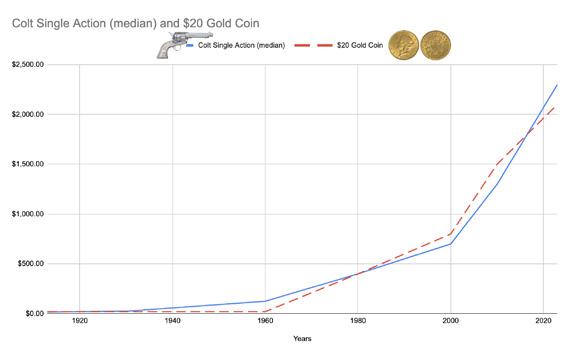
started over 20 years ago,” says Moore, explaining the measure is part of a broader effort by FDA to combat antimicrobial resistance (AMR).
GFI 152 classified antibiotics by risk categories based on their importance to food-animal use and human use, he explains. GFI 209 addressed judicious use of antibiotics, stating the industry wouldn’t use antibiotics for growth promotion and that antibiotics would be administered under the supervision of a veterinarian — by prescription (Rx). The veterinary feed directive (VFD) then placed drugs intended for use in animal feeds under the supervision of a licensed veterinarian.
“That accounted for about 96 percent of the over-the-counter antibiotics that were on the market,” says Moore. The logical next step was to take the other four percent of antibiotics available OTC and move them to prescription, and that’s what GFI 263 does.
“You’ll still be able to get the same antibiotics,” says Moore. “We’re not taking any antibiotics off the market; we’re just changing the marketing status of those products.”
After June 11, manufacturers will label and distribute the products as prescription only, and vendors will have to be licensed to sell prescription products.
Products in the system labeled OTC will not be pulled from the shelves, he notes. It will be legal to buy in stores while supplies last or until the product expires (usually within 24-34 months of manufacture).
to now, the U.S. dollar has lost more than 96 percent of its purchasing power it once had, largely due to inflation. For example, 2022 metrics show that $1 in 1913 would equate to over $30.00 in purchasing power today.
What does the purchasing power of a dollar mean? Simply put, it is how far your money goes when purchasing goods or services. You see, it really doesn’t matter how much money you have—as it does how far it goes when you spend it. In 1913 the Federal Reserve Act created the Federal Reserve bank and back then, it took just under $4, to be worth about the same as a $100 bill today. Another way to look at it is, if you had $100 back then, it would be like having over $3000 in today’s money when going out to buy something.
So back to our point that a $20 Gold Double Eagle or a Colt Pistol, as a collectible investment, was better than keeping it in US dollars, had you spent $20 on either of those items back in 1913 and sold them today, you would have
“If you have a product on the shelf or have it in your barn, you can still use it. That doesn’t change,” says Moore. However, eventually, the pathway for accessing antibiotics will change. You’ll need a prescription from a licensed veterinarian to purchase any antibiotics from a licensed vendor.
Get ready
Preparing for the upcoming change is a two-step process, says Moore.
Step 1 is to build a strong veterinary-client-patient relationship (VCPR) with your veterinarian so he or she can help you make sound decisions, says Moore. “Really, the conversation should start out, ‘How can you help me have a program with my herd that doesn’t require me to use antibiotics?’”
Listen in as Eric Moore discusses GFI 263 and the benefits of building a solid veterinarian-client-patient relationship.
The goal is a healthy herd, and your veterinarian can help build a program to minimize antibiotic use, he explains. Then, with knowledge of your operation, your veterinarian can write a prescription when it’s needed.
Step 2 is to ask your animal health suppliers if they are going to obtain a pharmacy license to sell prescription products. If they become licensed, you’ll still be able to use them as a supplier with a veterinary prescription.
Moore says he wants to avoid a case where a producer might go to their farm supply store to buy antibiotics to treat a calf with pinkeye, only to find they can’t get the product either be-
over $2000. While if you had a $20 bill back then and just saved it, you would still have $20, but would have lost 96% of your purchasing power between then and now. Even assuming you had put it in an interest bearing savings account, you would still have less than $200 today (assuming a 2 percent average rate over 100 years).
Not that we are telling you to go out and invest in $20 gold coins or Colt pistols, but facts are facts and these are interesting ones. There is another old saying which comes to mind, “God, gold, and guns is what made America great.” Whether you agree with the statement or not, it is a hard argument to overturn without making up alternative facts and using opinion. And historically gold and guns have definitely outperformed US Dollars when it comes to beating inflation. Why have the two collectibles remained so closely correlated though? Perhaps it is because both are considered to be desirable to collectors at about the same rate.

Happy Collecting!
cause the store doesn’t have a pharmacy license or they don’t have a prescription.
“That turns into an animal welfare issue because we have a calf that’s suffering from pinkeye,” he explains. “That’s a painful disease. We need to get it treated and get it mitigated right away.”
If the product isn’t available or the producer has been unaware and hasn’t made plans for obtaining a prescription under a valid VCPR, there could be an animal welfare issue with that calf.
“We need to make sure we’re planning ahead and getting things prepared,” Moore says.
Silver linings
A side benefit to talking to your veterinarian to obtain the prescription is the insight your veterinarian can provide, says Moore. Your veterinarian can ensure you are using the right product at the right time.
“The number one key to judicial use of antibiotics is preventing the disease in the first place,” Moore emphasizes. “That’s really what you’re talking to a veterinarian about, right? They’re going to have knowledge of what’s going on in your area, different emerging diseases or conditions that you have in your certain geography.”
By taking a holistic approach to analyzing your herd’s health, your veterinarian can help you see “those silent robbers,” says Moore. “Those things that don’t blatantly appear to you are things that slowly take profits from you as a producer.”
continued on page 8
Page 6 Livestock Market Digest March 15, 2023 o r n e r
▫
Colt Single Action Army-made 1876 $20 Gold Double Eagle-made 1897
■ PRICE REDUCED! CEDARVALE, NM – 7,113-acre ranch (5,152 ac. +/- Deeded – 1,961 ac. +/- State Lease) well fenced & watered w/good pens, new barn.
■ PRICE REDUCED! UNION CO., NM – 2,091.72 ac. (1,771.72 Deeded, 320 ac. -/+ State Lease), well watered w/three wells, two sets of steel pens.


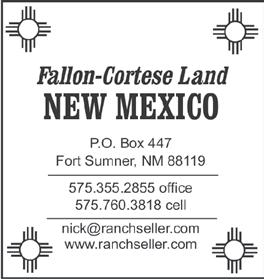
■ COLFAX COUNTY NM GETAWAY – 1,482.90 ac.+/- grassland (1,193.59 ac. +/- Deeded, 289.31 ac. State Lease), great location near all types of mountain recreation.
■ ANGUS, NM – 250 +/- acres with over a 1/2 mile of NM 48 frontage. Elevations from 6,800 to 7,200 feet. Two springs along a creek. Ideal for future development or build your own getaway home.
ESTATE GUIDE

■ KB RANCH - Kenney Co., TX – KB Ranch is a low fenced 802 +/- acre property that is surrounded by large ranches. The ranch has abundant whitetail and is also populated with turkey, dove, quail, hogs and varmint species. Axis are in the area and have been occasionally seen. The ranch lies approximately 9 miles south of Bracketville on TX 131 and is accessed by all weather Standart Road.
■ PECOS CO. – 637 ac., Big water, State Classified Minerals.

■ CASTRO CO., TX – 592 ac. +/_- w/remodeled 4 bd./4 ½ bath home, 160 ac. under pivot. Balance is dryland & native grass.
Dimmitt, TX 79027
Scott - Broker
Qualifying Broker 5:00am/10:00pm www.scottlandcompany.com
OR SMALL!
Guadalupe Co., deeded & 519 ranch on both flow daily) Sumner; wildlife, buyer looking New Mexico
Selling residential, farm, ranch, commercial and relocating properties.

Direct 575.935.9680 Office 575.935.9680 Fax coletta@plateautel.net www.clovisrealestatesales.com
521 West Second St • Porta es NM 88130 575-226-0671 or 575-226-0672 fax
Buena Vista Realty
■ CARSON CO., TX – 640 ac. +/- 5 mi. N of Panhandle on TX 207. 333 ac. +/- under 3 center pivot systems. One well produces 800 GPM. Permanent perimeter and cross fencing.
Qualifying Broker: A H (Jack) Merr ck 575-760-7521 www buenavista-nm com

■ PALO DURO CREEK TREASURE – 941 acres +/- in Randall Co. NW of Canyon, Tx. STUNNING
VIEWS OVER LOOKING PALO DURO CREEK Turn key cow/calf operation w development potential. Property includes: 3/3/3 ranch style home, 4 wells, large shop plus shed, enclosed livestock working facility w/hydraulic chute, livestock pens & shed, miles of 5 & 6 barbed wire fence & over 7000’ of pipe fence. YOU WILL NOT WANT TO MISS THIS! Canyon School District.
TEXAS & OKLA. FARMS & RANCHES
• 83 acre wood home with barns, meadows and woods. Fronts State Rd. $545,000
■ DEAF SMITH CO., TX. – 651 ac. +/-, 7 miles N of Dawn, TX, 1 mile E of FM 809. 349 acres native grass with well-maintained fencing and 302 acres of cultivated dry land.


• 160 acre Ranger Eastland Co, $560,000
■ PRICE REDUCED! DALLAM CO, TX – 1,216.63 ac. +/- of CRP/ranchland w/irrigation, re-development potential, wells & pipelines already in place.
■ PRICE REDUCTION! TURN-KEY
521 West Second St., Portales, NM 88130
Rural Properties around Portales, NM
1242 NM 480 - Nice home on 59.7 acres, grass
427 S Rrd P 1/2 - Large nice home, lots of barns 24+ ac 1694 S Rrd 4, Great home, barns, cattle pens, location 2344 S Rrd K east of Dora, NM, great - Near wind farms
All properties excellent homes & can have horses, etc.
See these and other properties at www.buenavista-nm.com
• 270 acre Mitchell County, Texas ranch. Investors dream; excellent cash flow. Rock formation being
listing agent
575-825-1291 www.buenavista-nm.com
980 ac. +/past, land lays side of Hwy. 54. Union Co., NM –grassland w/stateremodeled in very good on pvmt. +/- heavily livestock w/ fences etc., on the front gate. scenic ac. +/- on by Lincoln in Pines & covered meadow
Penasco. This build a legacy ac. irr., on Mexico, adjoins Potential.
POTENTIAL
Texline Special, +/- w/water & a beautiful 3 bathrooms, metal shop.
• 840 Immaculate, Hunt Co, TX. Ranch. Pastures, 40 tanks, and lakes. Beautiful home, barns, and other improvements. Some minerals, game galore. All for $1.35 million.
Joe Priest Real Estate
1-800/671-4548
NORTHERN CALIFORNIA RANCH PROPERTY
31 years in the ranch business - see www.ranch-lands.com for videos & brochures



DUANE & DIXIE McGARVA RANCH: approx. 985 acres Likely, CA. with about 600+ acre gravity flood irrigated pastures PLUS private 542 AU BLM permit. About 425 acres so of the irrigated are level to flood excellent pastures with balance good flood irrigated pastures. NO PUMPING COST! Dryland is perfect for expansion to pivot irrigated alfalfa if desired. Plus BLM permit for 540 AU is fenced into 4 fields on about 18,000 acres only 7 miles away. REDUCED ASKING PRICE - $3,125,000
THE SAND CAMP RANCH is a quality desert ranch with an excellent grass cover and above average improvements. Located in southern Chaves County east of the productive Pecos River Valley. The ranch is comprised of 2,598 +/- deeded acres, 6,717 NM State Lease Acres, 23,653 Federal BLM Lease Acres and 480 acres Uncontrolled, 33,448 total acres (52.26 Sections). Grazing Capacity set by a Section 3 BLM grazing permit at 408 Animal Units Yearlong. The ranch is watered by three wells and an extensive pipeline system. This ranch is ready to go, no deferred maintenance. Price: $3,870, 000. Call or email for a brochure and an appointment to come take a look.
BEAVER CREEK RANCH: about 82,000 acres - with 2,700 deeded acres plus contiguous USFS & BLM permits for 450 pair; 580+- acres irrigated alfalfa, pasture, and meadow from Beaver Creek water rights and one irrigation well. 3 homes, 2 hay barns, 4 feedlots each w/ 250 ton barns, 2 large reservoirs, can run up to


500-600 cows YEAR ROUND. REDUCED ASKING PRICE - $5,400,000
SOLD
joepriestre.net • joepriestre@earthlink.com

ranch that has been owned and operated miles southeast of Corona, NM in Lincoln BLM Lease Acres and 2,240 NM State AUYL. Water provided by five wells and corrals. The ranch had a good summer for a brochure or view on my website.
BEAR CREEK RANCH: Approx. 1,278 acres winter range ground and recreational property. Located on Bear Creek and accessed from South Cow Creek Valley Road. Should be great hunting for deer, wild turkey, wild pigs, quail & owner states good trout fishing in Bear Creek. Deeded access easement thru neighbor ranches.

No improvements & very private inside the ranch.
Now only $700 per acre - $894,600
EIGHT MILE DRAW LAND 740 ± Acres of unimproved native grassland located four miles west of Roswell in the Six Mile Hill area with frontage along U.S. Highway 70/380. This parcel is fenced on three sides and adjoins 120 acres of additional land that may be purchased. Great investment. $600 per acre.
BILL WRIGHT, SHASTA LAND SERVICES, INC.
• www.ranch-lands.com
• DRE# 00963490
530-941-8100
Scott McNally, Qualifying Broker Bar M Real Estate, LLC


P.O. Box 428, Roswell, NM 88202
Office: 575-622-5867 Cell: 575-420-1237
Website: www.ranchesnm.com
city limits of Roswell, NM. Six total acres Improved with a 2, 200 square foot residence, room and loafing shed. Price: $400,000
Miami, NM $370,000
MAXWELL 45, Excellent irrigated pasture with utilities in back of prop-
erty, including installed septic system, with private views of mountains. 40 irrigable acres and a domestic water meter installed. Great to put down home and bring horses. $249,000 $239,000 BAR LAZY 7 RANCH, Colfax County, Moreno Valley 594.38 +/- deeded acres, accessed off blacktop between Eagle Nest and Angel Fire. Historic headquarters. Currently used as summer grazing, pond and trees accessed off county road on rear of property as well. Presented “ASIS” New Survey, $4,000,000 $3,800,000 CIMARRON BUSINESS, Frontage opportunity, house, big shop and office buildings, easy view off Hwy 64. Formerly known as “The Porch.” $295,000 SPRINGER VIEW, 29.70 +/deeded acres. Large house being remodeled, shop, trees, old irrigation pond. All back off highway with great southern aspect. 311 Hwy 56, Colfax County. $209,000
March 15, 2023 Livestock Market Digest Page 7 REAL ESTATE GUIDE Livestock Market Digest Page 7 CHICO CREEK RANCH, Colfax County, NM. NEW LISTING. 6,404.26 +/- Total Acres, Located approximately 10 miles east of Springer New Mexico. 3,692.60 +/- deeded acres with balance in state lease. Excellent grass and water. Two plus miles of the Chico Creek meandering through the center of the property. Additional wells and dirt tanks. Nice historic head quarters privately located with shade trees and excellent views of the property. Shipping pens in central portion of property. $2,837,318 O’NEILL LAND, llc P.O. Box 145, Cimarron, NM 87714 • 575/376-2341 • Fax: 575/376-2347 land@swranches.com • www.swranches.com CIMARRON ON THE RIVER, Colfax County, NM. 7.338 +/deeded acres with 4.040 acre-feet per annum out of the Maxwell-Clutton Ditch. Custom country-chic 2,094 +/- sq ft home. Owns both sides of river in places. Horse/cow/chicken/ vegetable garden/greenhouse/orchard set up. Country living at it’s finest, in town, but in a world of your own. Very special on river. Appointment only. $650,000. RATON MILLION DOLLAR VIEW, Colfax County, NM. 97.68 alty er 40 ms erTY y.com SOCORRO PLAZA REALTY On the Plaza Donald Brown Qualifying Broker 505-507-2915 cell 505-838-0095 fax 116 Plaza PO Box 1903 Socorro, NM 87801 www.socorroplazarealty.com dbrown@socorroplazarealty.com COLETTA RAY Pioneer Realty 1304 Pile Street, Clovis, NM 88101 575-799-9600
UNDER CONTRACT
As Low As 3.5% OPWKCAP 3.5% INTEREST RATES AS LOW AS 3.5% Payments Scheduled on 25 Years Joe Stubblefield & Associates 13830 Western St., Amarillo, TX 806/622-3482 • cell 806/674-2062 joes3@suddenlink.net Michael Perez Associates Nara Visa, NM • 575-403-7970 SCOTT MCNALLY www ranchesnm com 575/622-5867 575/420-1237 Ranch Sales & Appraisals Ba r M Real Es t a te MAJOR PRICE REDUCTION – CALL PAUL FOR DETAILS 10 Acres of commercial property, incredible highway visibility and access from either east or west directions on Hwy 60, 3 miles East of Garden Inn Truck Plaza and 4 miles west of Willow Springs. Natural gas may be available on site. LOCATION PLUS! This property is well suited for many types of businesses (Restaurant, Retail, Motel, Business of any kind!) A MUST SEE PROPERTY. MLS#11402703 See all my listings at: paulmcgilliard.murney.com Paul McGilliard, Broker Associate Residential / Farms/Ranches / Commercial 417-839-5096 or 800-743-0336 521 West Second St • Portales, NM 88130 575-226-0671 or 575-226-0672 fax 521 West Second St • Portales, NM 88130 575-226-0671 or 575-226-0672 fax Buena Vista Realty Qualifying Broker: A H (Jack) Merrick 575-760-7521 www buenavista-nm com llc CAPULIN -SIERRA GRAND VIEW, Union County. NM. 520 +/- deeded acres with HQ 1.5 miles off highway, 3 bedroom 2 bathroom home with landscaped yard and volcanic rock walls, nice outbuildings, 3 registered wells including 1 registered as an irrigation well and an excellent solar well. Close proximity to Des Moines, NM. $898,000 DES MOINES, 336.58 +/- Deeded Acres Union County NM – 3 bedroom 2 bath home, 32ft X 30ft metal building on slab. 62 ft X 12 ft metal barn, one big pasture off highway. Mixture of open grass range and trees. Less than two miles to town. $575,000 MIAMI DREAM, 14.70 +/- deeded acres . Approx 1,583 sq ft 2 bedroom 1 bath home. Real country living with barn wood siding, porches, recent remodel for remote workspace. Irrigation and horse facilities, 57 Wampler St.,
AG LAND LOANS
RESTAURANT –READY FOR BUSINESS! One of the best steak houses in the nation just out of Amarillo & Canyon at Umbarger, TX., state-of-the-art bldg., w/complete facilities. www.scottlandcompany.com Ben G. Scott – Broker Krystal M. Nelson – NM QB 800-933-9698 5:00 a.m./10:00 p.m. RANCH & FARM REAL ESTATE We need listings on all types of ag properties large or small!
SOLD
COLETTA RAY Pioneer Realty 1304 Pile Street, Clovis, NM 88101 575-799-9600 Direct 575.935.9680 Office 575.935.9680 Fax coletta@plateautel.net www.clovisrealestatesales.com Selling residential, farm, ranch, commercial and relocating properties. 521 West Second St • Portales, NM 88130 575-226-0671 or 575-226-0672 fax Buena Vista Realty Qualifying Broker: A H (Jack) Merrick 575 760 7521 BottariRealty Paul Bottari, Broker 775/752-3040 Nevada Farms & raNch PrOPerTY www.bottarirealty.com 521 West Second 575-226-0671 Buena A.H. (Jack) www.buenavista-nm.com A SOURCE PROVEN RED 14298 N. ELM ESCALON CONSIGNMENTS C WELCO Advertise to Cattlemen and Ranchers! Call 505-243-9515 for more information ■ FLYING W MOUNTAIN RANCH: 345 AYL plus 5 horses located in the Cedar Mountains of Hachita, N.M. 39.60 +/sections, 25,347 +/- acres total, 1278 +/acres of deeded land, 3152 +/- acres of state land, 20,917 +/- acres of BLM, 3960 +/- acres of the allotment is within WSA, 4 miles of newer fence, over 55,000 gallons of water storage, 17 +/- miles of pipeline less than 20 years old, 3 wells plus 1 domestic well, (One well produces over 175 gpm). 4 pastures, 3 traps, 7 dirt tanks, house, barns, corrals, semi load & livestock scale. Priced at $2,900,000 ■ PHILLIPS RANCH/COW SPRINGS LEASE is a 52 Section cattle ranch located west of Deming, N.M. Road sign income!!! 33,323± total acres comprising of 3,742± acres of deeded 11,243± of NM state land 15,114± of BLM, seven wells, ranch includes two homes, metal barn, metal shop, corrals, livestock scale, cattle chute & semi-load ramp. Priced at $3,100,000 ■ CAMBRAY RANCH: 23 section cattle ranch, west of Las Cruces, NM. 14,973± total acres, 2994± acres of deeded land (with Highway 549 frontage), 7284± acres of state land, 3934± acres BLM, 781± acres of uncontrolled land. Headquarters has a custom built 3089 sq. ft. home built in 2008, 3 bedrooms, 2 and a half baths, and fireplace. 3 sets of corrals, five pastures. Roadside sign income. Priced at $2,225,000 SOLD
RX continued from page 6
Instead of managing a crisis at hand, the holistic view puts the pieces of the puzzle (calves with pinkeye, lighter weaning weights, slipping pregnancy percentage) together to identify a common source (poor fly control).
“You may pick up one thing, you may pick up five,” Moore says of taking a more holistic approach to herd health. “You may be doing it right, but at least you’re checking the box.”
During the 10 years he was in private practice in central Kansas, Moore says, most rewarding to him in working with clients was to see those small, continual improvements and seeing the herd blossom into a vibrant, profitable, sustainable herd.
“Watching that, that was a big reward for me as a veterinarian,” he says. “Having a veterinarian with a mindset that they’re in it for the long haul with you, is a valued partner to have going down the road.”
Ecogrief, climate grief, ecoanxiety, and chickens
Ecogrief
This is almost beyond belief.
The Washington Times is reporting the U.S. Fish and Wildlife Service will provide “ecogrief” training to employees who are “struggling with a sense of trauma or loss as they witness a changing environment.”
The article says this class “will give staffers a chance to define what they mean by ecological grief, space to examine their emotional reactions and tools to grapple with those feelings.” This was in a memo to the employees of the Southwest region, where the training is offered.
A spokesman for the agency says, ““This 4-hour workshop seeks to normalize the wide range of emotional responses that conservationists experience while empowering participants to act while taking care of themselves. The workshop is intended for those experiencing ecological grief and for those who wish to support them.”
Ecogrief, they say, is in a series of terms to describe stress. Other labels used are “climate grief” and “ecoanxiety”.
The author even contacted the American Psychological Association which says, “it can manifest as a sense of being overwhelmed by the immensity of changes to the environment, or even a sense of ‘anticipated loss’ — essentially mourning what someone believes to be inevitable, particularly with climate change.”
So there you have it. These people are supposedly sitting in their offices and experiencing “ecogrief”, “climate grief” and “ecoanxiety”.
If you feel you must grieve, then do so for:
—The ranching family that has to pack up and leave because a certain endangered plant is on their allotment.
—The ranching family that was tried twice for the same offense and labeled as terrorists

—The folks who worked in local timber mills that have been shut down
—The rural property owners who have seen their property and
K2 Red Angus Sale Report
What a crazy sale week we had! The roads were closed in every direction from our place up to the morning of the sale - some by the highway department, but mostly by drifts larger than my truck. We didn’t know if we could even get Ryan Large, with DV Auction, or Lex Madden, the auctioneer, through the snow to hold an auction.
We decided the sale would go on no matter what and were determined to go with that. We have always figured that DV Auction is our backup and it would not work well to change the date. This year really put this to the test.
The Highway Department worked late into the night opening I25. Jason went out early in the morning with the loader and opened up the road to the interstate - and we had one road in! For the first time ever not one single person showed up with a trailer. But, it was a great sale. Over 70 percent of the lots sold over DV Auction, phone or orders.
Choice of Lot 50A and 50B was offered as our donation lot to Wyoming LEAD (Leadership Education and Development). We gave 50 percent of Lot 50 to LEAD. Shawn and Lisa Daly of Douglas, Wyoming, bought Lot 50A, K2 Grit 618 294, for $6000. They are longtime buyers and wonderful supporters of the Wyoming LEAD program.
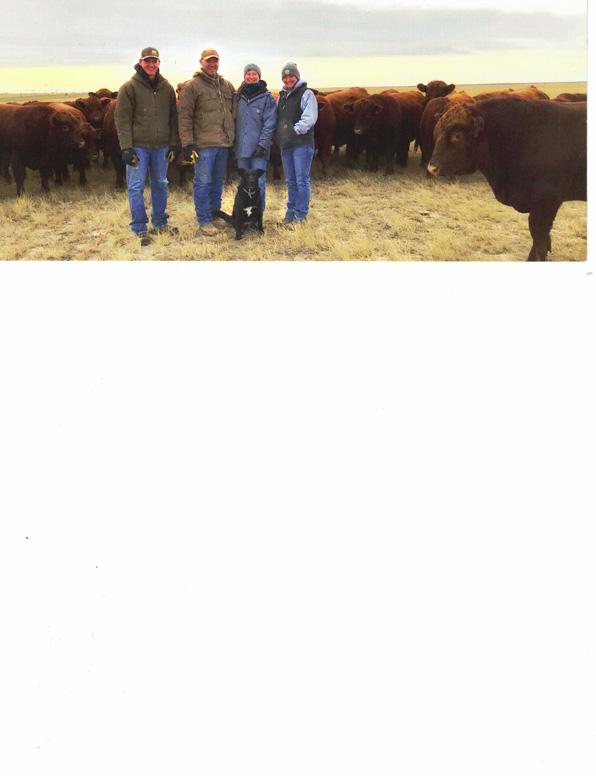
In spite of the weather challenges we had our best sale yet!
Kim Cullen, K2 Red Angus ▫
Utah Gov. Signals Support for Animal Burglary Bill
BY KATE GIBSON / MEATINGPLACE.COM
Utah Gov. Spencer Cox favors legislation that would make it illegal to use a livestock animal’s health as a reason to remove it from its owner.
Called the Theft Defense Amendments bill, the legislation would change the state’s criminal code to state it’s not a burglary defense to take livestock from its owner if the animal is sick or injured.
“I can’t think of anywhere else where it’s OK to trespass and steal property,” the Republican governor stated during a recent taping of the monthly PBS Utah Governor’s Press Conference program. The bill comes in reaction to a case in which two members of Direct Action Everywhere were found innocent of stealing piglets from a Smithfield Foods farm in Milford.
One of the defendants argued there’s a “big difference between stealing and rescue” during the trial, which ended in acquittals in October. Three others accepted plea deals in the 2017 incident.
Cox, who grew up on a farm in central Utah, argued agriculture has long been under attack in the state.
“I like food. I’m a big fan of food. I’m really grateful for the men and women that work to grow the food in our state, and I definitely want to be more supportive of them, not less supportive,” the governor told reporters. ▫
facilities burned to the ground as a result of federal policy and mismanagement.
That’s just a short list of the things that bring me grief. Call it ESAgrief, 30x30grief, NEPAanxiety, climatecrying or whatever you want, those are things that are worth grieving over.
Chickens
Looks like the lesser prairie is trying to flee the coop again, with the help of those poor folks suffering from ecogrief.
Four months ago those grieving folks in the US Fish & Wildlife Service recovered long enough to designate the lesser prairie chicken as threatened and endangered. How can it be both threatened and endangered? Because they designated two distinct populations. A northern population in the Texas panhandle, Kansas, Oklahoma and Colorado, which will be listed as threatened, and a southern distinct population in west Texas and New Mexico where the chicken will be classified as endangered.
The effective date for the designations was to be January 24, but those poor suffering souls have decided to extend that to March 27. Was this because of ecogrief? Nope, more likely it was because of a lawsuit.
The Western Livestock Journal reports the NCBA and other entities have filed suit to delay the listing. The NCBA says, “The science has proven repeatedly that healthy, diverse rangelands—like those cultivated by livestock grazing—are where the lesser prairie chicken thrives. There are numerous places where this listing goes seriously wrong and we are defending cattle producers against this overreaching, unscientific rule.”
The American Farm Bureau Federation has done an analysis that says the value of ag production in those states affected is “nearly $55 billion, or 15 percent of total U.S. production by value.” Now that is certainly enough to make you grieve.
30x30
Recall this is the Biden Administration’s initiative to protect 30 percent of the land and water across the entire globe. First proposed in 2020 by the High Ambition Coalition for Nature and People, it originally got 50 nations, including the US, to sign on to the program. By 2021 100 nations were participants. And by the end of 2022 190 nations had signed on. For Brian O’Donnell, the director of the Campaign for Nature, 30×30 should be considered a “floor not a ceiling.”
What does this mean for the U.S.? It would take an area twice the size of Texas to be set aside and protected. That definitely has me grieving again.
Until next time, be a nuisance to the devil and don’t forget to check that cinch.
Frank DuBois was the NM Secretary of Agriculture from 1988 to 2003, is the author of a blog: The Westerner (www.thewesterner.blogspot.com) and is the founder of The DuBois Rodeo Scholarship and The DuBois Western Heritage Foundation ▫
As Egg Prices Rise, so do Attempts to Smuggle Them From Mexico
SOURCE: CNN
High prices are driving an increase in attempts to bring eggs into the US from Mexico, according to border officials.
Officers at the San Diego Customs and Border Protection Office have seen an increase in the number of attempts to move eggs across the US-Mexico border, according to a tweet from director of field operations Jennifer De La O.
“The San Diego Field Office has recently noticed an increase in the number of eggs intercepted at our ports of entry,” wrote De La O in a tweet. “As a reminder, uncooked eggs are prohibited entry from Mexico into the U.S. Failure to declare agriculture items can result in penalties of up to $10,000.”
Bringing uncooked eggs from Mexico into the US is illegal because of the risk of bird flu and Newcastle disease, a contagious virus that affects birds, according to Customs and Border Protection.
In a statement emailed to CNN, Customs and Border Protection public affairs specialist Gerrelaine Alcordo attributed the rise in attempted egg smuggling to the spiking cost of eggs in the US. A massive outbreak of deadly avian flu among American chicken flocks has caused egg prices to skyrocket, climbing 11.1% from November to December and 59.9% annually, according to the Bureau of Labor Statistics.
The increase has been reported at the Tijuana-San Diego crossing as well as “other southwest border locations,” Alcordo said.
For the most part, travelers bringing eggs have declared the eggs while crossing the border. “When that happens the person can abandon the product without consequence,” said Alcordo. “CBP agriculture specialists will collect and then then destroy the eggs (and other prohibited food/ag products) as is the routine course of action.”
In a few incidents, travelers did not declare their eggs and the products were discovered during inspection. In those cases, the eggs were seized and the travelers received a $300 penalties, Alcordo explained.
“Penalties can be higher for repeat offenders or commercial size imports,” he added.
Alcordo emphasized the importance of declaring all food and agricultural products when traveling.
“While many items may be permissible, it’s best to declare them to avoid possible fines and penalties if they are deemed prohibited,” he said. “If they are declared and deemed prohibited, they can be abandoned without consequence. If they are undeclared and then discovered during an exam the traveler will be subject to penalties.” ▫
Page 8 Livestock Market Digest March 15, 2023
▫
Lone Star Ag Credit Returns Record $26 million in Patronage to Eligible CustomerOwners
Lone Star Ag Credit is returning a total of $26.0 million in patronage to its members, based on its continued strong growth in net income, earning assets and capital in 2022.
The cash patronage payment is a record for the rural lending cooperative.
“We’re proud that our continued financial strength allows us to pay out another record patronage dividend, even in the midst of a year where we’ve seen significant change to the economy,” said Joe Hayman, Lone Star Ag Credit chief executive officer. “We strive every year to return surplus earnings to our members and paying patronage dividends is a key element of the value our cooperative provides.”
Patronage dividend checks totaling $26.0 million will be mailed to eligible members in March.
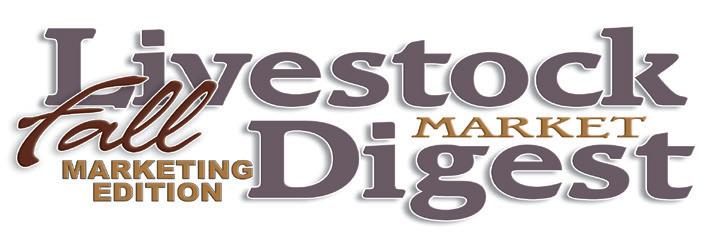
“As a board, we work to maintain a financially strong cooperative that provides strong customer value,” said Brent Neuhaus, Lone Star Ag Credit chairman of the board. “When we determine a patronage distribution, we look at a number of different economic and financial factors; as well as capital needs to sustain the organization over the long term. Although we’ve seen changes to the economy over the past year, the continued financial strength of the association allows us to distribute another solid patronage dividend.”
At the end of each year, Lone Star Ag Credit’s board determines how much income is required for capital needs. Then it returns the remainder as patronage dividends to members.
Lone Star has paid more than $165 million in patronage dividends to members over the last 10 years.
Lone Star Ag Credit provides financing for rural land, country homes, agribusinesses, livestock, agricultural equipment and operating expenses. The rural lender is headquartered in Fort Worth and has credit offices in Abilene, Cleburne, Corsicana, Denton, Fort Worth, Georgetown, Hillsboro, Lampasas, New Boston, Paris, Sherman, Stephenville, Sweetwater, Waco and Weatherford.
For more information, contact a local Lone Star branch office or visit LoneStarAgCredit. com.
Financial results discussed here are preliminary and unaudited. Please visit our website this spring to see our complete results.
Many Undocumented Immigrants Are Departing After Decades in the U.S.
SOURCE: THE NEW YORK TIMES
In August 2021, more than three decades after sneaking across the southern border as young adults to work and support their families in Mexico, Irma and Javier Hernandez checked in at La Guardia Airport for a one-way flight from New York to Oaxaca.
They were leaving behind four American children, stable jobs where they were valued employees and a country they had grown to love.
But after years of living in the United States without legal status, the couple had decided it was time to return to their homeland. Ms. Hernandez’s mother was 91, and they feared she might die — as Ms. Hernandez’s father and in-laws did — before they saw each other again. With dollar savings, they had built a little house, where they could live, and had invested in a tortilleria, which they could run. Their children, now young adults, could fend for themselves.
“Only God knows how hard we worked day after day in New York,” said Ms. Hernandez, 57. “We are still young enough that we could have kept going there, but ultimately we made the difficult choice to return.”
The Hernandezes are part of a wave of immigrants who have been leaving the United States and returning to their countries of origin in recent years, often after spending most of their lives toiling as undocumented workers. Some of them never intended to remain in the United States but said that the cost and danger of crossing the border kept them here once they had arrived — and they built lives. Now, middle-aged and still able-bodied, many are making a reverse migration.
Mexicans, who represent the largest and most transformative migration to the United States in modern history, started a gradual return more than a decade ago, with improvements in the Mexican economy and shrinking job opportunities in the United States during the last recession.
But departures have recently accelerated, beginning with crackdowns on immigrants under the Trump administration and continuing under President Biden as many older people decide they have realized their original goals for immigrating and can afford to trade the often-grueling work available to undocumented workers for a slower pace in their home country.
Their departures are one of many factors that have helped keep the total number of undocumented immigrants in the country relatively stable, despite a flood of migrant apprehensions at the southern border that reached two million last year.
“It’s a myth that everyone comes here and nobody ever leaves,” said Robert Warren, a senior visiting fellow at the Center for Migration Studies, a think tank, who wrote a recent report on the trend.
“There’s a lot of people leaving the country, and they’re leaving voluntarily,” said Mr. Warren, who is one of several demographers, including academics at Emory University, Princeton University and the University of California, Los Angeles, who have been documenting the trend.
The current undocumented population has stayed relatively constant at about 10.2 million over the past several years after peaking at nearly 12 million in 2008, even with the large number of new arrivals at the border.
An emergency health order adopted to slow the transmission of the coronavirus has allowed border authorities to quickly expel more than 2.5 million of the new arrivals since 2020; hundreds of thousands of others have been allowed to enter the country during that period. But a largely voluntary exodus of other immigrants has kept overall population numbers relatively steady, demographers say. (While deportations accelerated under both the Obama and Trump administrations, those numbers were too small to be a significant factor.)
The number of undocumented people from about a dozen countries, including Poland, the Philippines, Peru, South Korea and Uruguay, declined 30 percent or more from 2010 to 2020.
The undocumented population from Mexico, the principal source of immigrants to the United States, dropped to 4.4 million from 6.6 million during that period.
Declines were recorded in all but two states during the decade, plunging 49 percent in New York; 40 percent in California, which lost 815,000 Mexicans; 36 percent in Illinois; and 20 percent, or 267,000, in Texas. The data suggests that those residents were not moving to other states but returning to their home countries, Mr. Warren said.
There has long been an ebb and flow in undocumented immigration. People leave home in response to push factors, such as financial duress, drought and escalating violence, as well as in response to pull factors in the United States, chiefly jobs and safe haven.
The number of undocumented Polish immigrants shrank by half from 2010 to 2019 amid improving conditions in Poland. Brazilians returned in large numbers when their country’s economy was thriving, thanks to a food export boom and successful bids to host the 2014 World Cup and 2016 Olympics that spurred a construction bonanza.
Rubén Hernández-León, a sociologist at U.C.L.A. who has conducted field research of Mexicans who have returned home, said
that the primary reason people gave for leaving the United States was a desire to reunite with family.
The anti-immigrant rhetoric of former President Donald J. Trump coupled with his administration’s crackdown on unlawful immigration caused anxiety that also drove some undocumented people, especially Mexicans, to leave, Mr. Hernández-León said.
A return to the homeland has always characterized Mexico-U.S. migration. For a long time, mainly men alone traveled back and forth between their villages and the United States, earning dollars during monthslong stays.
This circular migration was upended in the early 1990s as the United States introduced a spate of policies to fortify the border, erecting barriers and deploying more agents.
But the border restrictions backfired. After facing risks and paying smugglers to cross the border, undocumented workers stayed in the United States, rather than coming and going.
“Most of them never wanted to stay. We gummed up the works when we militarized the border,” said Douglas S. Massey, an immigration scholar at Princeton. “They spent longer and longer time and had families.”

Now, he said, census data suggests that many of them are electing to go home.
“If they have savings and a house in Mexico, they can retire there,” he said. ”Their kids born in the States are now old enough to take care of themselves and can go back and forth to visit.”
Ms. Hernandez left her Mexican pueblo in 1987 “por la necesidad,” she said.
In New York, she settled into nanny jobs with families in Manhattan and sent money home. She fell in love with Javier, a fellow Oaxacan who had immigrated around the same time and was learning the art of making pizza. They married and their first child, Jennifer, was born in 1992.
Without legal status and with the border increasingly barricaded, the Hernandezes could not risk leaving the United States.
Mr. Hernandez’s parents passed away, and he mourned them from afar, unable to attend their funerals. Ms. Hernandez’s father died.
“Years passed, and we harbored hopes that we could secure papers to move freely between both countries,” Ms. Hernandez said.
The last amnesty program passed by Congress in 1986 enabled 2.3 million Mexicans to legalize their status. Since then, Democrats and Republicans have failed to reach a consensus on another immigration reform bill again and again.
For Mr. and Ms. Hernandez, years in the United States turned into decades. Along the way, the couple had a son and then a set of twin boys.
Jennifer eventually attended divinity school at Harvard University, and then returned to New York to work for Make the Road New York, an immigrant advocacy group; her three younger siblings finished high school. When she turned 21, Jennifer could sponsor her parents for green cards, but they quickly realized it was a process that would take more than a decade to complete.
“We started having this real serious conversation about them going back so that my mother could have time with her mother before she passed away,” Jennifer said.
The couple figured they could make ends meet selling the maize, cabbage and herbs grown on their small plot of land in Mexico and the tortillas from the factory they had recently acquired. Their children, now adults, assured them that they could help support them, if necessary. But it was a heart-wrenching decision to make — even though the couple had always thought of going home.
The children Ms. Hernandez had helped raise as a nanny in New York were distraught.
“It took a year until we pulled the trigger,” Jennifer said.
All four Hernandez children joined their parents on the plane to Oaxaca, and after settling into the house there they all took their first-ever vacation as a family, a week on a Mexican beach. Then the children boarded a flight back to the United States.
“We cried all the way to New York,” Jennifer recalled. “It’s been a year and a half, and it’s still very hard,” she said, her voice cracking.
Ms. Hernandez said she still hoped to return to New York one day, at least for extended visits, if Jennifer is eventually able to secure green cards for the couple.
“I have my children there, and one day they will have children,” she said. “I will want to care for my grandchildren.” ▫
March 15, 2023 Livestock Market Digest Page 9
▫ Patronize Our Advertisers
Advertise to Cattleman in the Livestock Market
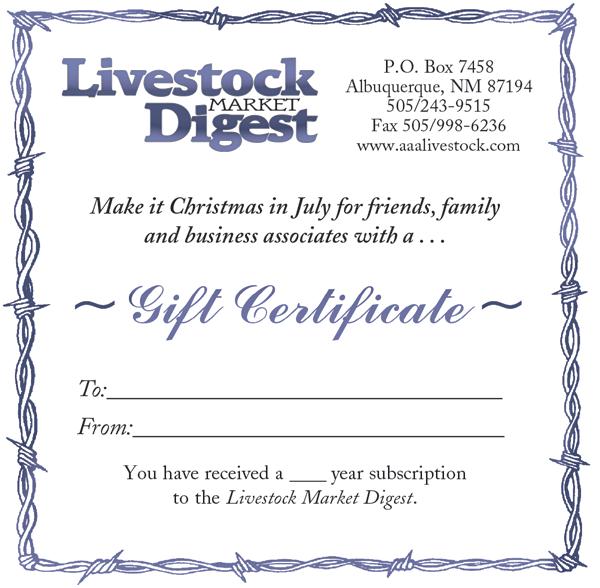


White Gold
Task force working to capture value for commercial producers of Charolais-influenced cattle.
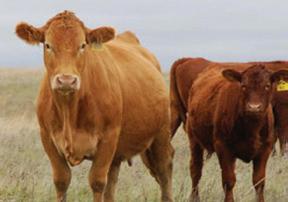 BY SHARLA ISHMAEL
BY SHARLA ISHMAEL
There aren’t too many scenes that’ll make a commercial cattle producer – and their banker – prouder than looking at a growthy, stout, smoky calf standing almost as tall as his black or baldie mama. The picture can change depending on the location of the ranch – he might be looking at the same scale-busting calf next to a good tiger-striped mama down south. Either way, producers have long known that capitalizing on the magic of heterosis compounded with the use of a terminal-breed sire is a profitable way to max out the scales at weaning, as yearlings or fat cattle. With the nation’s Jan. 1 beef cow inventory hitting one of the lowest numbers seen in recent history due to widespread drought, it is more important than ever for the commercial rancher to take advantage of a bullish market predicted for calves and feeders over the next few years.
With a much smaller herd and the need to go slow with restocking as the land recovers from drought – hopefully before the next one hits – every pound will count. Unfortunately, the market is set up today based on premiums for black-hided cattle and given that the cattle
The View
FROM
As a professional farrier for over 46 years, my biggest fear has come to pass. The United States Government is telling farriers and trainers on the nation’s horse racing tracks how horses should be shod.
This is truly the worst attack on an individual’s freedom that I have seen in the livestock business so far. Even the courts aren’t certain that it is constitutional. Perhaps you don’t think it’s your problem?
Just wait another ten years when HISA is expanded and comes out to inspect ol’Pards horseshoeing job before you can go on the big gather. Farriers, horse trainers, and veterinarians are expected to comply with new horseshoeing rules set forth by the Horse Racing Integrity and Safety Authority known as HISA. The Horse Racing Integrity and Safety Act was passed by Congress and signed into law in 2020 by President Trump.
In my opinion, it was the biggest mistake of his presidency. Stop and think a moment about who else this alleged “authority” effects. Horseshoe manufacturers, horseshoe tool manufacturers, jockeys, grooms, horse track designers, and builders, etc. have to get up in the morning and comply with HISA. Rather than complying, tell them to stuff it.

One of HISA’s first rules is: The Racetrack Safety Pro-

cycle has been in the heavy-supply stage, where every segment after the ranch has enjoyed the ability to be choosey, it has meant good cattle of all colors don’t always get sold for the value they bring to the industry at every stage.
It’s a problem Charolais seedstock producers are not willing to deal with any longer. So much so that the American-International Charolais Association has created a task force of progressive breeders and outside consultants to explore every possible opportunity to make sure their commercial bull buyers get additional or new market access for their calves.
“Numerous closeout sheets from Charolais-influenced cattle harvested at Tyson plants in the past two years document these cattle produce carcasses that compete extremely well on the rail,” says AICA Executive Vice President Clint Rusk. “It is imperative this carcass value be reflected in the live market.”
Charolais breeders are not alone in their quest to fix the problem.
“Our task force is already working with another task force led by Tom Brink, chief executive officer of the Red Angus Association of America, to explore a change in the way feeder cattle are marketed,” Rusk explains. “Our Charolais breeders agree with those who say feeder cattle should be marketed on their genetic merit rather than the color of their hide.”
Last year, Brink released an important white paper with results of a survey of feedlot managers that shows they also see a great need for change in the feeder cattle market. When asked if black-hided feeder cattle are superior to non-black cattle of equal weight, sex and health history, 75 percent disagreed with that statement.
In fact, 92 percent of the survey participants agreed or strongly agreed with this statement: “For the beef industry to continue improving its overall cattle quality and value, hide color should be replaced with more objective genetic criteria as a key price-determining factor(s) in the U.S. feeder cattle market.”
What will it take to make those changes so smoky or cream-colored calves can get premiums for their performance? For the Charolais task force, all options are on the table, from feeder cattle marketing programs, better utilization of existing grids for Charolais-influenced cattle, data gathering from private sources to solidify how these cattle excel in terms of feed efficiency, average daily gain and overall performance at the feedlot and packer in terms of both red meat yield and quality grade on the rail.
They are working on getting Charolais-influenced cattle into the latest sustainability research projects to study their efficiency advantages relative to other breeds. If carbon capture and greenhouse emissions play a role in the future of beef, breeders on the task force believe the breed’s natural efficiency and
Government Horseshoeing
gram prohibits traction devices on forelimb and hindlimb horseshoes during racing and training on grass or synthetic racing tracks. Traction devices include, but are not limited to rims, toe grabs, bends, jar caulks, stickers, traction nails and/or mud nails.
This rule is supposed to be applied carte blanche at every racing track in the country. Now how stupid is that? The racing surface at Santa Anita in California is harder and faster than any racing surface in Kentucky or Florida. If you are shoeing horses running on a muddy track at The Fairgrounds in New Orleans a traction device may just save a wreck from happening.
Horsemen that work with these animals everyday should be making these calls, not some government entity that makes one rule for all involved. HISA has a nine-member board and only one member is a farrier. If farriers want to know who the sell out farrier is, it is Patrick Reilly, who is Chief of Farrier Services at New Bolton Center in Pennsylvania.
I suspect he has shod lots of race horses on several race tracks across the United States in order to tell over 30, 000 race track farriers how race horses at every track ought to be shod. Number one, if Mr. Reilly agreed to be on this board, he evidently has no regard for something in America called freedom.
Incidentally, there is no
transparency within HISA. No one knows who or how much they are being paid or by whom. You can find out any other government employee’s salary, but not HISA?
It looks to me like Lisa Lazarus the CEO of HISA spent 10 years with the National Football League. Just speculating, but isn’t that a “woke” organization? Do we need that in the horse racing industry?
The good news is according to Blood Horse Magazine on November 18, 2022: “Holding that the Horseracing Integrity and Safety Authority is not subordinate to the Federal Trade Commission, the US Fifth Circuit Court of Appeals declared its enabling legislation unconstitutional.”
Of course, there will be more appeals by HISA and there are a number of other lawsuits against HISA that are pending from Horseman’s Associations and states racing authorities.
We have had horse racing in America since before the American Revolution. Yes, horse racing has its problems like any other sport, but those problems need to be solved by horsemen, not government. It’s incumbent to remember Ronald Reagan’s famous quote, “The most terrifying words in the English language are: I’m from the government and I’m here to help.” ▫
Page 10 Livestock Market Digest March 15, 2023 Kaddatz Auctioneering & Farm Equipment Sales New & Used parts, Tractor & Farm Equipment. Salvage yard: Tractors, Combines, Hay & Farm Equipment Online auctions: We can sell your farm, ranch & construction equipment anywhere in the U.S. 254-221-9271 Order parts online at www.farmstore.com – 15% rebate www.kaddatzequipment.com CLASSIFIEDS BEEFMASTER 210.732.3132 • beefmasters.org 118 W. BANDER A ROAD BOERNE, T X 78006 g•u•i•d •e Bradley 3 Ranch Ltd. www.bradley3ranch.com M.L. Bradley, 806/888-1062 Cell: 940/585-6471 Ranch-Raised ANGUS Bulls for Ranchers Since 1955 Annual Bull Sale February 10, 2024 at the Ranch NE of Estelline, TX angus
Digest
SIDE
THE BACK
The perfect gift for friends, family & business associates that gives throughout the year!
performance will be a competitive advantage in that arena.
The task force has met with major packing company executives to determine how Charolais-influenced cattle are perceived on their end and what the association can do to help increase demand for the cattle at the retail level. They’ve also initiated discussions on private branding with meat marketing experts.
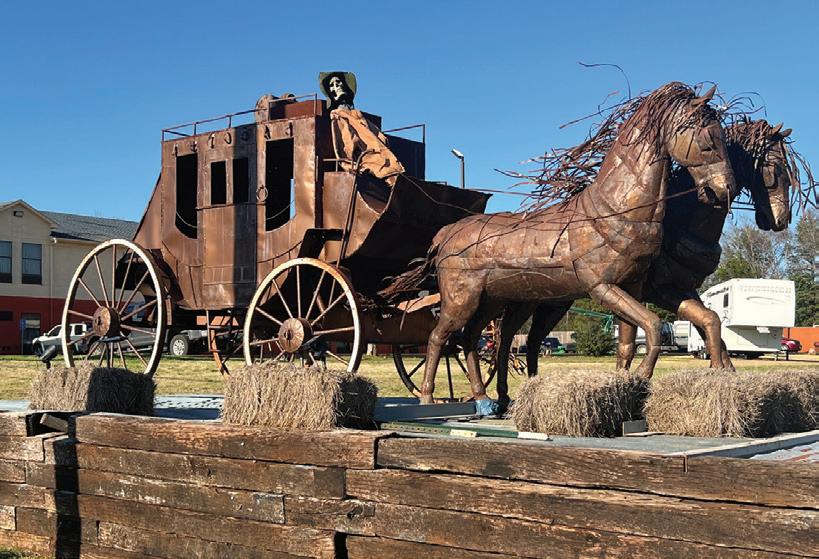
Basically, these breeders are reaching out to every segment of the industry to lay groundwork leading to a premium structure for Charolais-influenced cattle at the commercial level. Charolais-influenced cattle are already well-liked in the industry. Ranchers appreciate the cattle for their performance, feeders love them for their efficiency and packers value their cutability, ability to grade Choice or better, as well as putting more product in the box. The task for these seedstock folks is to find ways to capture the real-world value of Charolais-influenced calves.
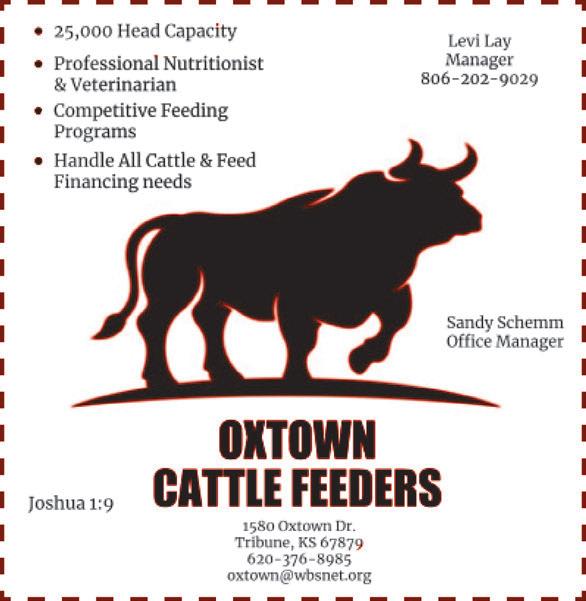
Marcine Moldenhauer is one of the industry experts AICA has tapped to advise the task force. She has experience both as a breeder of Charolais, Red Angus and Maine-Anjou, 25 years in cattle procurement as a cattle buyer, strategic supply manager and leading the premium sales and marketing team for a major packer. For the last 15 years as owner of Meatlink Management, LLC, her livestock and meat business consulting firm, she has worked with multiple companies in multiple countries, breed associations, chefs and specialty fed cattle beef programs on the challenges and how to approach creating and supplying a branded beef program.
“Packers know the value of Charolais-cross cattle, they do cutting tests, they track performance, they know,” she explains. “They know Charolais-cross are going to yield from live to carcass and from carcass to the box; the packers know these cattle have very favorable quality grades with low yield grades. They know these cattle are a good value. However, because over the last 10 years or so there have been plant closings and increased supply, the packers have simply not had to pay more for these types of cattle.”
For years, USDA has only recognized “Angus” as 51 percent black hided, those cattle that are percentage Angus (red

or black), have not been accepted into “Angus” brands, such as black-nosed Charolais or the blonde-hided cattle. She believes in order to compete with that, it’s necessary to cultivate either a foodservice, retail or a small restaurant partner – better yet one of each – that understands the value and sees an opportunity for them.
“This is why Cargill, for one, created their Sterling Silver brand over 25 years ago,” she adds. “The other challenge is to create multi-tiered brands where Charolais-cross cattle that are USDA Select or higher all have a home in a branded beef program. You want multiple programs for the Charolais-influenced cattle to go into. The reality is the packer is not going to find your customer for you, that will be the breed’s job.”
One of the breeders on the task force is Brett DeBruycker of Montana, who says the Charolais association is up for the challenge.
“We’re being very aggressive in fleshing out the different opportunities,” he says. “I think the association is refocusing on what is most important to our business, and that is the commercial cattle producer. I’ll admit we fell behind in promoting what our breed can do.
“For instance, I have documentation that pink-nosed, straightbred Charolais cattle qualified for the following premiums in the summer of 2022. Steers received $80/head and heifers received $85/head on the U.S. Premium Beef grid. These cattle added value to the industry by grading and yielding well on the rail,” he adds.
“You’ve got to hand it to Angus, they were out helping packers sell meat, spending money as an association talking to retailers while we, as a breed, were focusing on breed improvement and adding value to our customers and the industry through increased performance, efficiency and carcass quality,” DeBruycker adds. “Hindsight being 2020, we should have been helping packers sell Charolais beef. One of the things I have learned on this task force is how vitally important it is for our breed to talk to consumers.”

A few years ago, he took a phone call from a gentleman from France who recently moved to Washington state. The man was very excited to have found DeBruycker Charolais online because he had been looking for Charolais beef
since moving to the U.S. The man told him in France, Charolais is considered a delicacy and everybody there wants to eat it. DeBruycker says more U.S. consumers would share that fondness for beef from the white breed if they got a chance to taste it and know where it came from.
Mark Nelson is also advising the Charolais task force, and he too has seen the other side of the business having ran the Angus America program for Cargill for seven years. He says part of what the breed needs to keep its eyes on is being ready for the future, when the cattle cycle turns again and cattle numbers are on the rise.
“I think in the next five years, ranchers will benefit from high prices due to short supplies,” he says. “But we all know those high prices won’t last. So, the breed needs to have something up and running on all cylinders by then so folks with Charolais-cross calves will be able to use them when they really need them. There is so much potential with this breed. Charolais is the kingpin of what they do. The cattle have really been begging for their breeders to do something like this because the cattle merit it.”
So, from a commercial perspective what does this mean for their Charolais-influenced calves being born now? It means those white bulls in the pasture
will bring home gold for you now by putting extra pounds on the scale when every pound is likely to be worth much more than it has been when cattle numbers were high. And, if the Charolais task force does the job it hopes
to accomplish, you’ll have not just more pounds to sell in the future but also more premiums and demand for those high-performing calves. Stay tuned. ▫
March 15, 2023 Livestock Market Digest Page 11
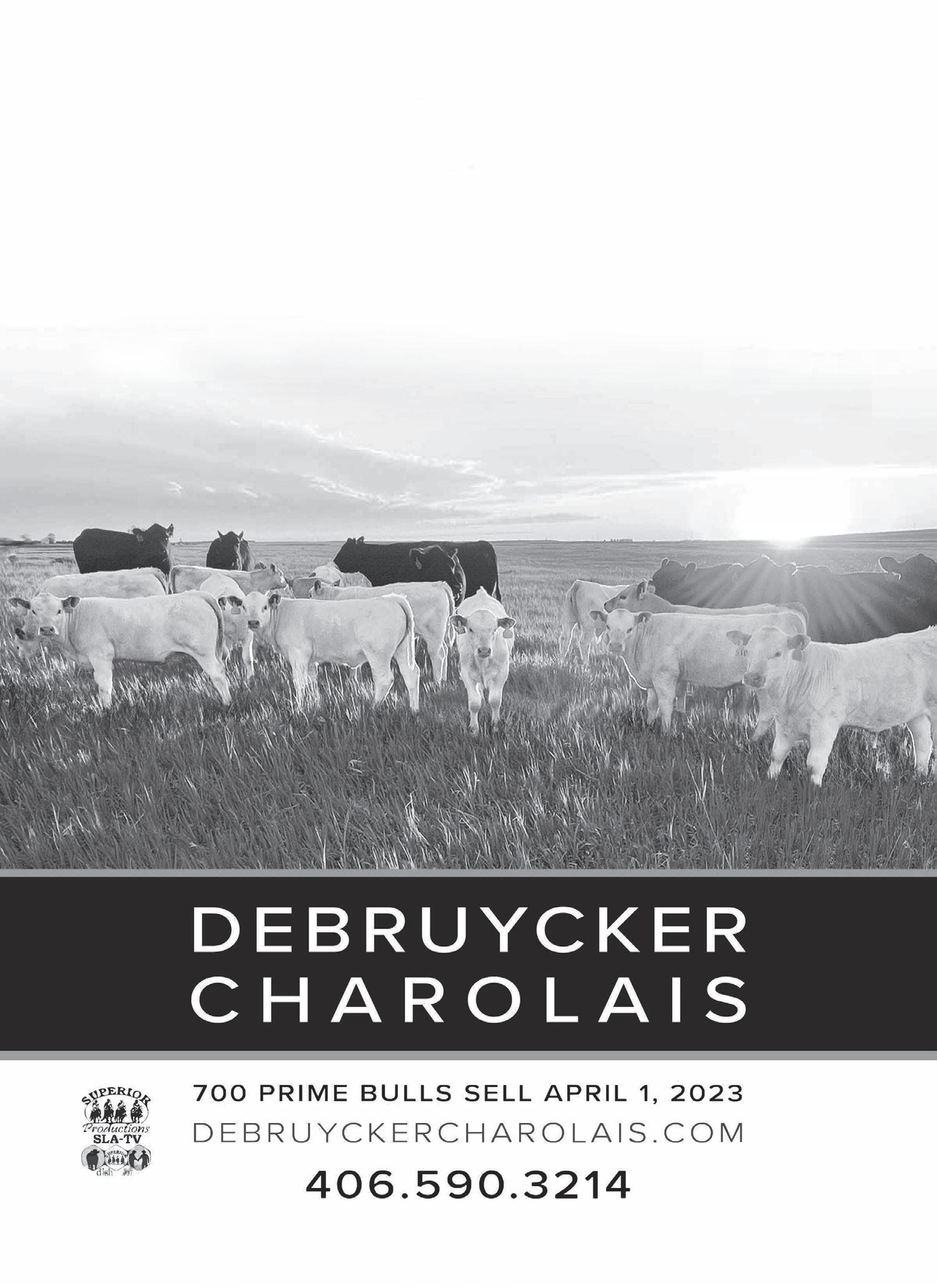















 Randy Summers
Randy Summers




























 BY SHARLA ISHMAEL
BY SHARLA ISHMAEL







